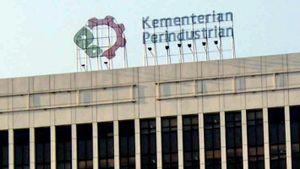The Ministry of Industry (Kemenperin) said there was an increase in the utility of the national cement industry in line with the start of infrastructure development in Indonesia.
Director of the Cement, Ceramic, and Processing Industry of Non-Aligned Galiran Materials, Directorate General of IKFT of the Ministry of Industry, Wiwik Pudjiastuti, said the increase in utility was in the range of 7-8 percent.
"Semen, yes, thank God it has started (going), since yesterday the last report has started to increase, each region is different, but in general the increase is around 7-8 percent compared to last month and also compared to the same month last year," Wiwik told reporters at the Ministry of Industry Building, Jakarta, Tuesday, October 17.
Wiwik admits that the development of the State Capital (IKN) is one of the government projects that encourages the utilization of the cement industry. This is known based on industrial performance in the Kalimantan area.
"One of them is IKN, that's why yesterday's performance in the Kalimantan area was quite high," he said.
He is also very optimistic that the performance and utilities of the cement industry will continue to improve along with the development of infrastructure projects in the country.
"Hopefully once the infrastructure starts running, the utilities of cement will definitely increase," said Wiwik.
SEE ALSO:
Meanwhile, based on data from the Ministry of Industry, cement production in the first semester of 2023 reached 29.3 million tons, with the national demand for cement reaching 28 million tons.
Meanwhile, cement production throughout 2022 is more than 64 million tons, with a need of around 63 million tons.
The national cement industry consists of 15 integrated cement companies spread from Aceh to Papua, with a total installed capacity of 116 million tons per year.
However, currently, the national cement industry is still experiencing an overcapacity of 51.8 million tons or 45 percent.
The condition of the cement industry's overcapacity occurs in almost all regions, except for Bali-Nusa Tenggara and Maluku-Papua. The largest percentage of overcapacity occurred in Java, which was more than 55.4 percent.
The English, Chinese, Japanese, Arabic, and French versions are automatically generated by the AI. So there may still be inaccuracies in translating, please always see Indonesian as our main language. (system supported by DigitalSiber.id)














